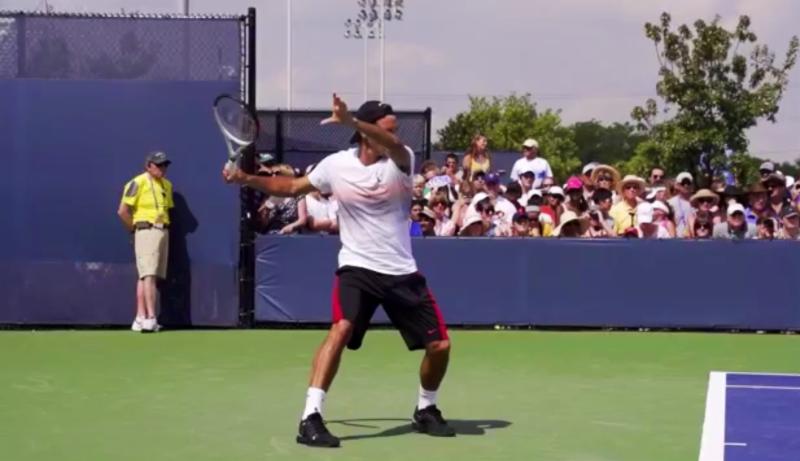This is the second in a series of articles which will teach you how to maximize the most out of your game and help you become a smarter tennis player when preparing to play a league match or a tournament.
- The Night Before The Match
- Game Day
- Match Play
Game Day
Pre-Match Dynamic Stretching
You should go through your pre-match stretching routine automatically before every match. It should be short, painless and effective. It will help your game and prevent injuries.
Laps: Run walk. Side-steps. Crossover steps. Karaoke. High knees.
Upper body: Arm circles frontward and backwards. Two arm hugs.
Lower body: Ball of the feet walk (cool walk). On the heels walk. Kicks(Frankenstein). Bent over touches. Knees to chest. Grab ankles and pull back. Squat lounges. Backwards skip.
Pre-Match Preparation Warm Up
This stage of the preparation comes 30-40 minutes before your match. This is different than the 5 minute warm up you will have with your opponent. Make sure you have a plan of what you want to accomplish during this stage.
Hit all the shots: Start just behind the service line and work your way back to the baseline. Hit cross-courts on the forehand and backhand sides. Take some volleys and overheads. Take serves and returns to both the deuce and ad sides.
Execute game plan: Work on the patterns that you will be using during the match. This includes certain shots you know you will need to execute IE: Swinging volleys, drop shots, return of serves.
Match intensity: It is important to practice with high intensity and focus level. This will allow you to start the match with good rhythm.
The 5 Minute Warm Up With Opponent
Take this stage of your preparation to get rid of some of the butterflies and loosen up. Pay attention to your opponent and see if you can pick out some weaknesses that they might have that day.
Hit long: When you start warming up its best to hit out on your shots. If your shots are going long, it’s ok. It is always easier to make your shots go shorter once the match starts than it is to make your shots go longer when you are hitting the balls short.
Hit all shots: Make sure you hit forehands, backhands, volleys, overheads, serves, and returns on both the deuce and ad sides.
Play hard: Warm up as close to match intensity as possible. You don’t want to have a bad start to the match.
Controlling The Nerves
“Under pressure you can perform fifteen percent better or worse.”-Scott Hamilton
Every athlete, whether he or she admits it, feels nervous in competition. How you deal with the nerves is the important part. Nerves are your body’s way of starting your defense mechanism. Your body releases adrenalin which can heightened your senses and give you SUPER POWERS or it can completely shut you down. Nerves help the quality players because they use the good parts and control the bad. Which one are you?
Deep breathes: Focus and control you’re breathing. Take smooth, rhythmic, deep breaths. This will slow down your heart rate and reduce the nerves.
Exaggerate: Consciously tell yourself to exaggerate moving your feet and to swing faster, because these are the two parts of your game that go south when nerves are involved.
Know your #: The number you need to know is your heart rate. Everyone has an optimal number that corresponds with peak performance. Knowing your number and learning to control it will allow you to perform at your best. If your number is too high think and do things that help you relax like listening to slow music, deep breathing, for players who are 30 years of age and older-a little alcohol in the system does wonder for some people ;-). If your number is too low, make quick and constant sprinting burst along the baseline or jump around until you feel your number rise to the optimal level.
The next article will include: How to start a match? What to do during change overs? Developing match rituals and the most important stage of the match, how to close the match out? What to do when the match is over?
To your tennis success,
Jimmy Mendieta


